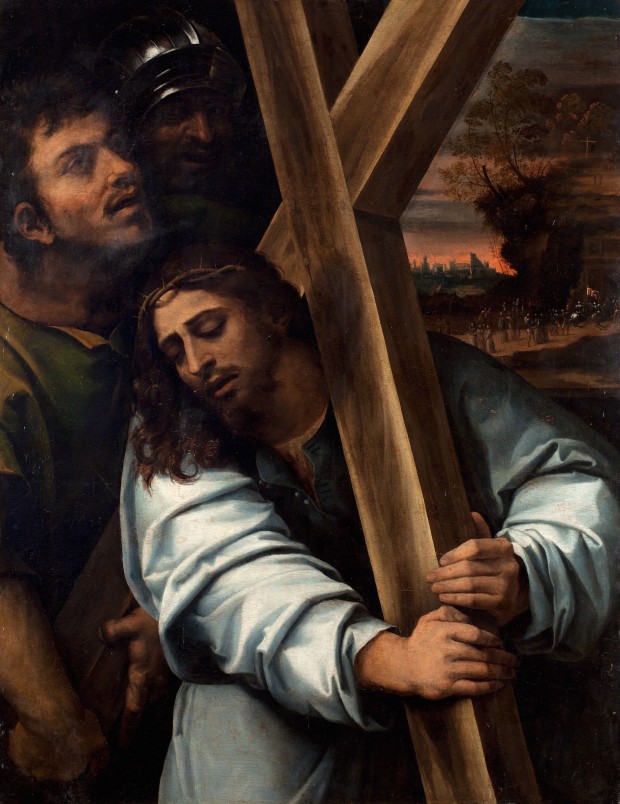The Art Institute of Chicago’s (AIC) acquisition of a newly discovered important painting by Sebastiano del Piombo, Christ Carrying the Cross, which he painted in Rome 1515–17, testifies to just how productive the nurturing of museum-dealer relationships can be.
‘The picture came from a private collector in Spain, documented to the 1950s, but the family had had it for longer’, explains Rebecca Long, associate curator of European painting and sculpture at the AIC. ‘It was offered at a small auction in Madrid and picked up by Colnaghi. We’ve had a long relationship with them. You always have to be in conversation with the dealers – they know much more than we do about the market for pictures.’
Christ Carrying the Cross (1515/17), Sebastiano del Piombo. Courtesy Colnaghi

Colnaghi knew that the AIC was searching for a ‘prime 16th-century Italian painting, preferably made in Rome’ to plug one of the department’s gaps, continues Long. ‘That’s a pretty big hole!’ This picture hits all the right buttons. Sebastiano was one of the most important artists working in 16th-century Rome. It is the first major discovery of a work by him in recent years; its provenance is solid; it is in excellent condition (just needed a clean); and it depicts a subject popular since the beginning of the century. Cristo portacroce (Christ carrying the cross) had already been tackled with success by Giovanni Bellini, Giorgione, Andrea Mantegna and others. Sebastiano added drama to his interpretation in a number of ways: by having Simon of Cyrene help Christ carry his heavy cross; by Christ’s expression of acceptance of his inevitable death; and by keeping the composition tight with the diagonally-placed cross coming right into the viewer’s space. The mystical twilight background shows how his Venetian training under Bellini and Giorgione continued well after his arrival in Rome in 1511, where he was taken under the wing of Michelangelo who taught him his monumental style and even provided drawings for some of Sebastiano’s commissions.
Having bought the picture, Colnaghi took it to London. Before they cleaned it up in 2015, they showed it to the AIC. ‘It was apparent how good it was,’ Long remembers. ‘It is great to work with a dealer who knows our needs and actively looks for something spectacular for us. Those guys see the value of having a relationship with museums. It’s not a walk in the woods, we have a long bureaucratic process.’
The AIC do not need to conserve the painting, but they are seeking the appropriate frame it deserves. Meanwhile, it is on display with their ‘small but fine’ collection of central Italian High Renaissance art including works by Pontormo, Bronzino, Correggio and a recent acquisition by Fra Bartolomeo.
For more information on Sebastiano del Piombo’s work in the Art Institute of Chicago, visit the museum’s website.



